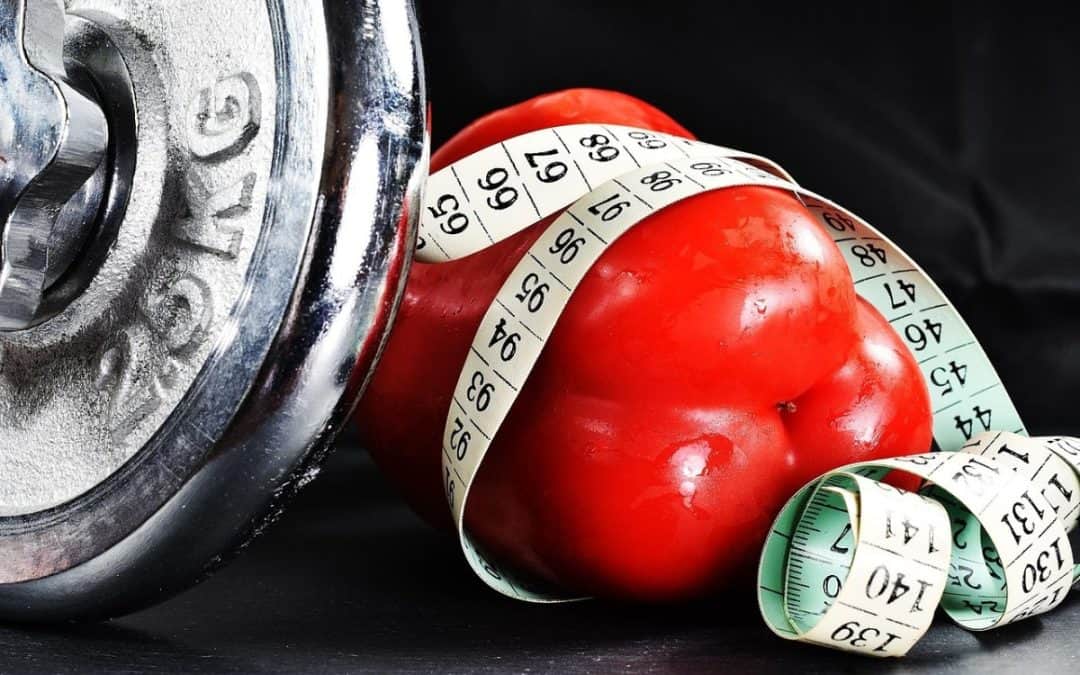Trying to lose weight can feel like guesswork. Between viral diets, miracle pills, and conflicting advice, it’s hard to know what actually works and what’s safe. This guide keeps it simple and evidence‑based.
You’ll find clear targets for food, movement, and habits, plus when medications or surgery make sense, how to avoid scams, and a 12‑week roadmap that builds momentum without extremes. It’s designed to be personalized: whether you’re busy, on a budget, managing a health condition, or starting over after a plateau.
Start with the Quick summary, then use the How to use this guide checklist to pick your first three actions. Small, repeatable changes beat temporary perfection.
Quick summary
Safe pace
Aim for ~1–2 pounds per week (≈0.5–1 kg/week). Even a 5–10% loss of your starting weight can meaningfully improve health — for example:
- 150 lb (≈68 kg): lose ~7.5–15 lb (≈3.5–7 kg)
- 200 lb (≈91 kg): lose ~10–20 lb (≈4.5–9 kg)
- 250 lb (≈113 kg): lose ~12.5–25 lb (≈6–11 kg)
- 300 lb (≈136 kg): lose ~15–30 lb (≈7–14 kg)
Move goal
Build toward 150–300 min/week of moderate aerobic activity plus 2+ days/week of strength training.
What works
Multi-component programs with regular coaching (≥12 sessions in year one), self-monitoring, problem-solving, and ongoing support.
No single “perfect” diet
Create a calorie deficit with a pattern you can stick with.
How to use this guide
- Bookmark this page and save your baseline (weight, waist, steps, sleep).
- Pick one food habit, one movement action, and one behavior tweak to practice this week.
- Review weekly. Work in 12‑week cycles, then shift to maintenance using the checklist below.
Why there’s no single “perfect plan”
Weight management isn’t one‑size‑fits‑all. The most effective plans are personalized, combine nutrition + activity + behavior strategies, and look beyond the scale to include sleep, stress, medications, and health conditions.
About BMI: Treat BMI as a screening tool, not a diagnosis. Pair it with waist circumference, current health (blood pressure, blood sugar, lipids), and how you feel/function.
Safety first: baseline checks & when to get help
- Measure starting point: current weight, waist circumference (measure at the level of the navel after exhaling), weekly step count, current workouts, typical sleep, and a brief food diary.
- Review health & meds: Some conditions (e.g., sleep apnea, depression, thyroid conditions) and medications can affect weight or appetite. Bring questions to your clinician.
- When to seek a clinician‑led start:
- Heart, lung, or kidney conditions, pregnancy/postpartum, eating‑disorder history, or multiple chronic conditions.
- Planning aggressive calorie deficits or considering weight‑loss medications/surgery.
- Professional support helps: Ask about referral to intensive, multicomponent behavioral programs (often 12+ sessions in the first year) or a registered dietitian (RD/RDN).
Red flag to avoid: Programs that promise rapid, effortless weight loss without changing eating or activity habits.
For reliable, science-based guidance, see the CDC’s Healthy Weight—Losing Weight page, which covers safe rates of weight loss, healthy eating, and physical activity basics.
Nutrition that works (and lasts)
Core principle: Consistency beats perfection. Choose an eating pattern you can sustain that creates a modest calorie deficit and emphasizes nutrient‑dense foods.
Build your plate most days:
Protein
Aim for about 1.2–1.6 g/kg of body weight per day (≈0.55–0.73 g/lb), unless otherwise directed by your clinician. Spread protein across meals to support satiety, preserve lean muscle, and aid recovery.
Fiber
Target 25–30 g/day from whole foods like vegetables, fruits, legumes, whole grains, nuts, and seeds. Fiber helps control appetite, supports gut health, and balances blood sugar.
Carbs & fats
Choose minimally processed sources such as whole grains, oats, potatoes, olive oil, avocado, nuts, and seeds. Cut back on sugary drinks and limit ultra-processed snacks that add calories without nutrition.
Portion planning
Pre-portion snacks, use smaller plates, and store higher-calorie foods out of sight to make healthier choices the easy default.
Flexible patterns that work
Mediterranean, higher-protein, lower-carb, plant-forward, and time-restricted eating can all be effective. The best choice is the one you can stick with for months and build into your lifestyle.
Habit anchors:
- Log food most days (any app or a simple notes doc).
- Plan 3–5 default breakfasts/lunches and 10–12 go‑to dinners.
- Keep a “green‑light” snack list (e.g., Greek yogurt, fruit, edamame, nuts in pre‑portioned bags).
Myths to skip: Juice cleanses, “detox” teas, cabbage‑soup or water‑only diets, and miracle “metabolism boosters.” Prioritize steady progress and nourishment.

Movement: burn energy, keep muscle, feel better
For health
Aim for 150–300 minutes per week of moderate activity—such as brisk walking, cycling, or swimming—plus at least two strength-training sessions.
For fat loss
The higher your total weekly activity (up to ~300 minutes), the more it supports weight loss and long-term maintenance—especially when combined with balanced nutrition.
Strength matters
Include full-body resistance training at least twice per week using bodyweight, bands, machines, or free weights. This preserves muscle, boosts metabolism, and improves body composition.
NEAT counts
Non-exercise activity thermogenesis (NEAT) adds up: take the stairs, walk during breaks, stand while working, and keep up with active chores. Small daily movements make a big difference over time.
Starter strength circuit (2–3 sets)
- Squat or chair sit-to-stand
- Push-up (wall, knee, or floor)
- Hip hinge or light deadlift
- Row (band or cable)
- Overhead press
- Plank (20–40 seconds)
Behavior change & getting unstuck
- Self‑monitor: Weigh 1–3×/week, track food/activity, and review weekly trends—not day‑to‑day noise.
- SMART goals: Specific, Measurable, Achievable, Relevant, Time‑bound (e.g., “Walk 25 min after lunch, M/W/F, for four weeks”).
- Sleep & stress: 7–9 hours/night when possible; use wind‑down routines. Practice simple stress tools (2–5 minute breathing, short walks, journaling).
- Environment design: Place high‑fiber/protein foods at eye level; pre‑portion treats; keep walking shoes visible; schedule movement in your calendar.
- When progress stalls (2–4 weeks flat):
- Tighten food logging and portions
- Add 1,000–2,000 daily steps
- Add or progress strength work
- Revisit sleep/stress
- Consider professional support.
Medications & surgery (if lifestyle alone isn’t enough)
Prescription anti‑obesity medications (AOMs): For many adults with a BMI ≥30, or a BMI ≥27 with a weight‑related condition, approved medications can meaningfully augment lifestyle changes. Examples include GLP‑1 and GIP/GLP‑1 agents (e.g., semaglutide 2.4 mg; tirzepatide) as well as other options. These require medical supervision, label‑based dosing, and awareness of common GI side effects.
Metabolic/bariatric surgery: Today’s criteria emphasize individualized risk‑benefit assessment. Surgery is combined with lifelong nutrition support, supplementation, and follow‑up.
Important: Medications and surgery are adjuncts, not replacements, for nutrition, activity, and behavior support.
Choose a legit program (and avoid scams)
Green flags:
- Clear curriculum with weekly sessions early on, then maintenance.
- Qualified coaches or registered dietitians.
- Tools for self‑monitoring (food/activity/weight).
- A plan for relapse prevention and long‑term support.
Red flags:
- “Lose 20 pounds in two weeks—no diet or exercise.”
- “Works for everyone” or “permanent results.”
- Expensive supplements or proprietary drops are the “secret.”
- Pressure tactics, before‑and‑after photos without context, or no refund policy.
Supplements warning: Many “natural” weight‑loss products are adulterated or mislabeled. Stick with evidence‑based therapies and discuss any supplements with your clinician.
Where yoga fits
Yoga and mindful movement can improve stress management, mobility, and balance, excellent supports for weight management. On their own, they may not meet weekly activity targets for significant fat loss; pair yoga with walking, cycling, or other aerobic activity and strength training.

Special situations (quick notes)
- Diabetes, hypertension, PCOS, perimenopause: You may benefit from tailored nutrition (e.g., protein spacing, carb timing), specific medications, and RD/RDN support.
- Medications affecting weight: Some antidepressants, antipsychotics, diabetes meds, and steroids can influence weight; ask about alternatives.
- Pregnancy/postpartum: Focus on nutrient quality, appropriate gain/loss goals set with your clinician, pelvic‑floor‑safe activity, and support.
- Older adults: Prioritize protein and resistance training to protect muscle and function; include balance work.
A practical 12‑week starter roadmap
Weeks 1–2: Foundation
- Baseline: weight, waist, average steps, sleep, and a 3‑day food log.
- Walk 20–30 min, 3×/week; 2 short strength circuits.
- Stock kitchen with lean proteins, high‑fiber carbs, and colorful produce.
- Set two SMART goals and one sleep goal.
Weeks 3–6: Build
- Reach 150 min/week aerobic total; keep 2×/week full‑body strength.
- Hit daily protein + fiber targets.
- Add one social or group session for accountability (class, walking buddy).
- Review progress weekly; adjust portions or snacks if needed.
Weeks 7–12: Push & refine
- Progress toward 200–300 min/week activity (mix intervals and longer walks).
- Nudge steps up by 1,000–2,000/day above baseline.
- Refresh goals; troubleshoot plateaus using the checklist in the Behavior Change & Getting Unstuck section.
- Plan a simple maintenance phase after Week 12 (see next section).
Transition to maintenance (the real victory lap)
- Keep 2+ strength sessions/week and a movement base you enjoy.
- Continue self‑monitoring (weekly weight, food, or step check‑ins).
- Pre‑plan “flex meals” and travel strategies.
- Set non‑scale goals (sleep score, PR on a walk loop, lifting progression).
- Expect and normalize small regains; use them as early alerts to re‑engage habits.
Quick tools & checklists
Scam filter
Skip any program that promises rapid, effortless, guaranteed, or permanent results or one that hides its curriculum and credentials.
Restaurant rule of 2
When dining out, pick two indulgences: bread, dessert, or alcohol, and pass on the third to balance enjoyment with moderation.
Plate method
Fill half your plate with non-starchy vegetables, one-quarter with lean protein, and one-quarter with high-fiber carbs. Add a thumb-sized serving of healthy fat.
Cravings plan
Pause for 10 minutes before giving in. Drink water or tea, try a higher-protein or fiber snack first, and if you still want it, enjoy a sensible portion mindfully.
Conclusion
There’s no such thing as a perfect, one-size-fits-all plan, only the plan you put into practice consistently. Focus on the basics: fuel with balanced nutrition, move your body most days, protect muscle with strength training, and build small habits you can repeat. Think in 12-week cycles, then adjust and maintain. Measure success not just by the scale, but also by how you feel, your waist size, your energy, and key health markers.
When progress slows, return to the fundamentals: tighten tracking, add steps or strength work, improve sleep, and manage stress. And don’t hesitate to seek support from a registered dietitian, healthcare provider, or a reputable program. Sustainable weight loss is much easier with guidance and accountability.
Next step: choose one food habit, one movement action, and one behavior tweak to start this week, then schedule your check‑in for the same time next week.
(Editor’s Note – Updated: 9/17/25)
=======================================
© 2011 by Overweight.net. All rights reserved. No part of this document may be reproduced or transmitted in any form or by any means, electronic, mechanical, photocopying, recording, or otherwise, without the prior written permission of Overweight.net.







